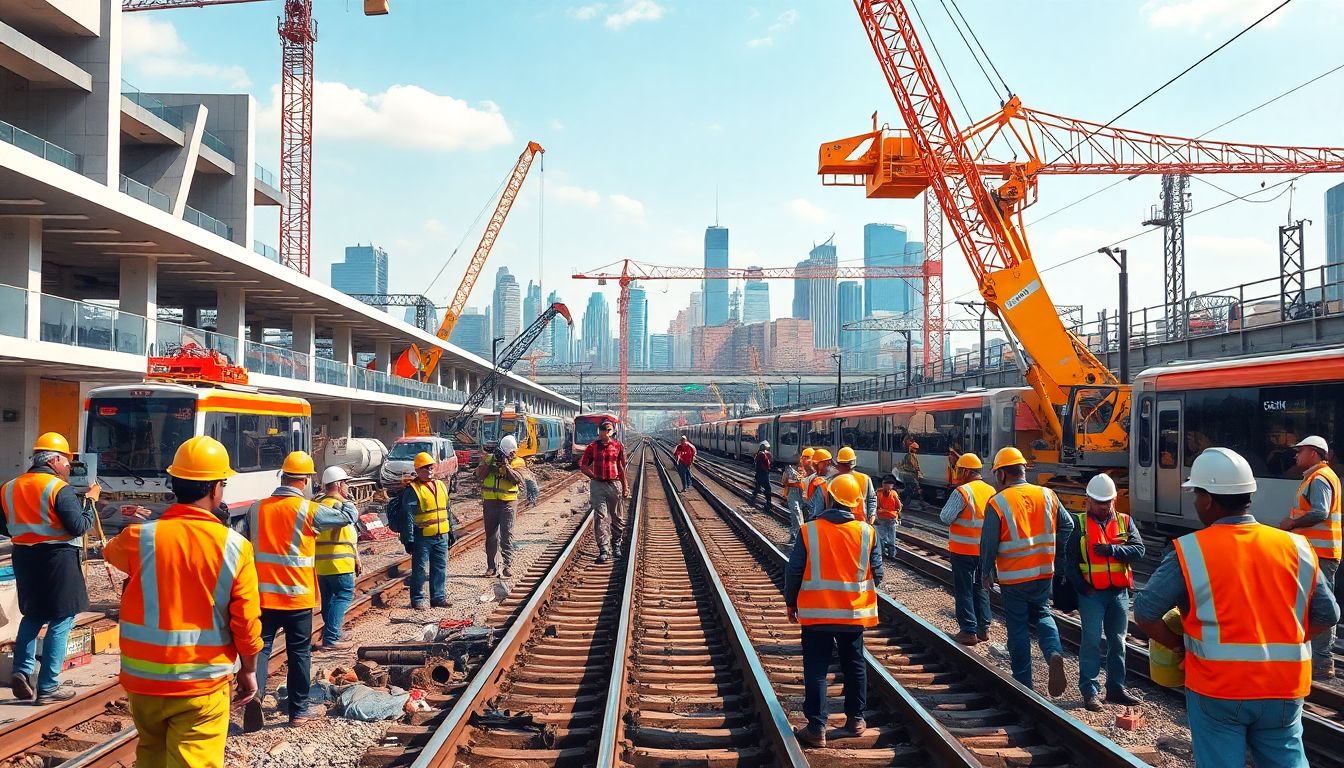6 Types of Railways Work Tenders Construction And Metro Rail

6 Types of Railways Work Tenders Construction And Metro Rail Projects
Introduction
Developing railway infrastructure plays a crucial role in shaping city life and boosting economies. Efficient rail and metro systems help millions move quickly and easily. As cities grow, so does the need for new railway projects, attracting more investments worldwide. To build these large systems successfully, understanding the different tender types is essential. Selecting the right tender can make or break a project.
Understanding Railway Work Tenders: An Overview
Railway work tenders are offers solicited by governments or private firms to carry out specific parts of railway projects. They are how these big projects find builders, designers, and suppliers. Railway projects are complex, involving thousands of workers and equipment over many years. Choosing the correct tender type helps ensure projects finish on time, stay within budget, and meet safety standards.
Main Types of Railway Construction and Metro Rail Tenders
Planning and Design Tenders
Notes: These tenders focus on the early stages of railway development. They involve planning the route, designing the infrastructure, and engineering services.
Scope of work: These include feasibility studies, route alignment, tracks, stations, and overall infrastructure layout.
Examples: For instance, Delhi Metro Phase IV used design tenders to select consultants who planned every detail of the project.
Expert insight: Using innovative design tenders can help cut costs and make construction faster. Good planning also reduces surprises during construction. Designing smart solutions early on saves time and money later.
Construction Contract Tenders
Notes: These tenders cover the actual building of railway or metro infrastructure.
Type details: Common types include EPC (Engineering, Procurement, Construction), Lump Sum contracts, and Cost-Plus contracts.
Benefits: They offer clear deadlines, fixed budgets, and better risk management. This reduces surprises during construction.
Case studies: Mumbai Metro used construction tenders successfully, completing projects on time and within budget. Many global metro projects follow a similar approach to achieve reliable results.
Supply and Equipment Tenders
Notes: These are for buying the trains, signaling systems, and track equipment needed for rail systems.
Key considerations: It’s essential to specify quality standards and ensure that new equipment works with existing infrastructure.
Examples: Siemens supplied trains for China’s Shenzhen Metro, demonstrating how top-quality tenders can meet high standards.
Expert tips: When evaluating tenders, check compatibility, durability, and tech features. Good suppliers help keep systems safe and reliable.
Maintenance and Operation Tenders
Notes: These tenders are for running and maintaining the railway or metro after construction.
Types: Sometimes governments choose public-private partnerships (PPPs) or turnkey operation contracts to manage these systems.
Case in point: Dubai Metro’s operation contracts were awarded through competitive bidding, ensuring efficient service.
Actionable tip: Structuring maintenance tenders for long-term savings can keep systems running smoothly and cost-effectively for years.
Upgradation and Modernization Tenders
Notes: These tenders focus on improving existing railway or metro systems.
Scope: Upgrades include signal systems, stations, tracks, and rolling stock.
Influencing factors: Older infrastructure needs modernization to handle more passengers and advanced technologies.
Example: London Underground regularly invites tenders for system upgrades to boost capacity and reliability.
Emergency and Special Project Tenders
Notes: These are for urgent repairs, safety upgrades, or unusual infrastructure projects.
Features: Tenders need quick responses, often involving specialized contractors.
Case example: Taiwan’s railway network issued emergency tenders after earthquake damage to restore safety quickly.
Expert advice: Clear guidelines and fast processes are crucial in emergency tenders to save time and prevent further damage.
Key Considerations in Selecting the Right Tender Type
When choosing a tender, consider the following:
- How big and complex the project is
- Your budget and funding sources
- The timeline and how quickly work needs to be done
- Local rules and safety regulations
- How much risk your project can handle and what kind of contract offers flexibility
Conclusion
Understanding the six main types of railway tenders helps create better projects. Picking the right tender type impacts budget, schedule, and quality. As railway technology and needs change, so do tender strategies. For best results, work with experienced consultants who can customize tenders for your specific project. Proper tender selection is the key to building safer, faster, and more reliable railway systems.



Comments
Post a Comment